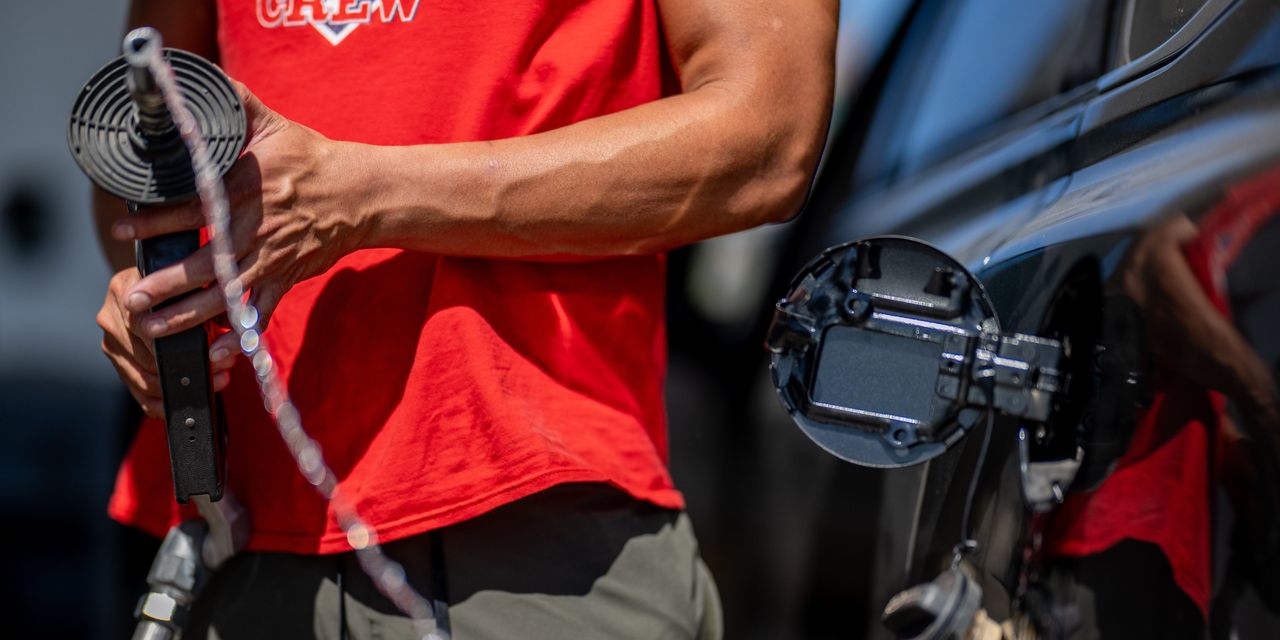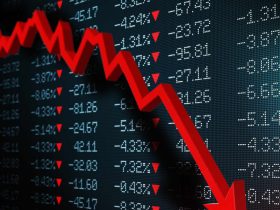The more than 6 million-barrel weekly rise in U.S. gasoline supplies reported by the Energy Information Administration wasn’t just a surprise, but the strongest sign yet that prices for oil and its products have reached the breaking point for consumers.
“Historically, high gasoline prices weigh on driving demand,” said Brian Milne, product manager, editor, and analyst at DTN. “Seasonally, gasoline demand falls off in September following the summer months.”
The average price for a gallon of regular gasoline, however, climbed to $3.857 on Sept. 16, the highest since Oct. 18, 2022, according to data from GasBuddy, so the high so far for this year came just as the summer driving season came to a close.
On Thursday afternoon, the average price stood at $3.725 a gallon, down 9.1 cents from a week ago.
It’s no coincidence that the climb in gasoline prices in September came as U.S. benchmark prices for oil topped $90 a barrel.
Front-month West Texas Intermediate crude futures
CL.1,
settled at $93.68 a barrel on the New York Mercantile Exchange on Sept. 27, the highest since Aug. 29, 2022, according to Dow Jones Market Data.
Oil prices have fallen back since then. On Thursday, November WTI crude
CLX23,
settled at $82.31.
Around mid-September, Troy Vincent, senior market analyst at DTN, had told MarketWatch that a test of key technical resistance level at $98 for Brent, and fundamental data beginning to show high prices weighing on demand, looked set to converge.
“Indeed, we got this perfect convergence of bearish technical pricing developments and fundamental data that have now pushed crude futures below their 50-day moving averages,” Vincent said. “Demand weakness, particularly for gasoline, has been exacerbated by higher prices as we had expected.”
The EIA on Wednesday reported an unexpected 6.5 million-barrel rise in gasoline supplies for the week ended Sept. 29. That came on the back of data from the government agency showing that motor gasoline product supplied, which is a proxy for demand, averaged 8.3 million barrels a day over the last four-week period, down 5% from the same period last year.
The steep decline in gasoline demand in September was “a far greater falloff in consumption patterns than we typically have experienced,” said Milne.
Part of the reason for this includes high retail gasoline prices and persistent inflation, he said. “Climbing interest rates will also slow discretionary spending by consumers, which has closely correlated with driving activity.”
And there are “structural changes” to the fuel market to consider as well, said Milne. “Every quarter there are more electric vehicles displacing gasoline demand, while gas-powered vehicles are increasingly more efficient, capturing greater travel miles with less fuel.”
The EIA’s U.S. gasoline demand proxy figures show that demand is 10.4% below 2019 levels, 5% below year-ago levels for the seasonal period, and even 3% below 2020 levels, according to Vincent. “Gasoline prices have peaked for the year” and gasoline crack spreads — the difference between the price of oil and the selling price of product — have plummeted to late 2020 levels.
The sharp turn lower in gasoline crack spreads, as well as diesel crack spreads this week, even as crude prices have tumbled lower, show that the oil production cuts by OPEC+, which is comprised of members of the Organization of the Petroleum Exporting Countries and their allies, have “pushed the market to its limits,” said Vincent.
“OPEC-induced or managed market tightness is simply not the same as organic tightness, given that the tightness was created by growing spare [production] capacity,” he said.
“By artificially tightening the market so severely and then extending those cuts, OPEC was ultimately always going to test the willingness of refined product consumers,” Vincent said. “The market is now seeing that there’s little appetite to push crude prices well over $100 while inflation lingers, the U.S. dollar pushes to new highs for the year, and interest rates are set to remain high.”
““The pronounced weakness in demand relative to history is unlikely to turn around sharply anytime soon.” ”
Gasoline demand should see a modest rise in the very near term amid the holiday break in the fall, and lower retail prices will inevitably lead to higher consumption later this year, he said.
However, “the pronounced weakness in demand relative to history is unlikely to turn around sharply anytime soon,” Vincent said.
Read the full article here











Leave a Reply